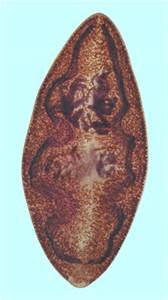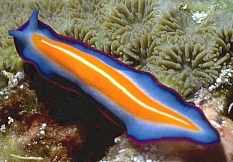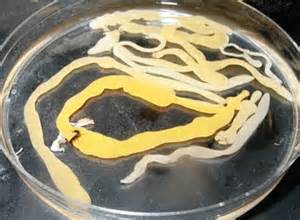Okay, this is a gamble.
I began this series to celebrate the year of the Gulf of Mexico – “Embracing the Gulf 2020”. The idea was to write about the habitats, creatures, economic impacts, and issues surrounding the “pond” that we live on. I did a few introductory articles and then jumped right into the animals. We began with the fun ones – fish, sea turtles, whales – and now we are in the more unfamiliar – invertebrates like sponges and jellyfish.
But worms? Really? Who wants to read about worms?
Well, there are a lot of them, and they are everywhere. You will find in many sediment samples that worms dominate. They also play an important role in the marine community. They are great scavengers, cleaning the environment, and an important source of food in the food chains of the more familiar animals. But they are gross and creepy. When we find worms, we think the environment is gross and creepy – and sometimes it is, remember they CLEAN THE ENVIRONMENT. But worse is that many are parasites. Yes… many of them are, and that is certainly gross and creepy. Flukes, tapeworms, hookworms, leeches, who wants to learn amore about those? Well, honestly, parasitism is an interesting way to find food and the story on how they do this is pretty interesting… and gross… and creepy. Let’s get started.
According to Robert Barnes’ 1980 book Invertebrate Zoology, there are at least 11 phyla of worms – it is a big group. We are not going to go over all of them, rather I will focus on what I call the “big three”: flatworms, roundworms, and segmented worms. We will begin with the most primitive, the flatworms.
As the name implies, these worms are flat. They are so because they are the last of what we call the “acoelomate” animals. Acoelomates are animals that lack an internal body cavity and, thus, have no true body organs – there is no where for them to go. So, they absorb what they need, and excrete, through special cells in their skin. To be efficient at this, they are flat – this increases the surface area in contact with the environment. There are three classes of flatworms – one free swimming, and two that are parasitic.
The free-swimming ones are called turbellarians. Most are very small, look like leaves, very colorful, and undulate as they swim near the bottom. They have “eye-like” cells called photophores that allow them to see light – they can then choose whether to move towards the dark or not. They have nerve cells but no true brain, and one only one opening to the digestive tract – that being the mouth, so they must eat and go to the bathroom through the same opening. Weirder yet, the mouth is usually in the middle of the body, not at the head end. Some are carnivorous feeding on small invertebrates, others prefer algae, others are scavengers (CLEANING THE OCEAN). They can reproduce by regenerating their bodies but most use sexually reproduction. They are hermaphrodites – being both male and female. They can fertilize themselves but more often seek out another worm. Fertilization is internal and they lay very few eggs.

The human liver fluke. One of the trematode flatworms that are parasitic.
Photo: University of Pennsylvania
The second group are called trematodes and they are the parasites we know as “flukes”. We have heard of liver flukes in livestock and humans, but there are marine versions as well. They have adhesive organs located at the near the mouth that help hold on, and a type of skin that protects them from their hosts’ defensive enzymes. They feed on cells, mucous, and sometimes blood – yep… gross and creepy. Some are attached outside of their hosts body (ectoparasites) others are attached to internal organs (endoparasites). The ectoparasites breath using oxygen (aerobic), endoparasites are anaerobic. Like their turbellarian cousins, they are hermaphroditic and use internal fertilization to produce eggs. They differ though in that they produce 10,000 – 100,000 eggs! Their primary host (the one they spend their adult life feeding on) is always a vertebrate, fish being the most common. However, their life cycle requires the hatching larva find an intermediate host where they go through their developmental growth before returning to a primary host. These intermediate host are usually invertebrates, like snails. The eggs are released with the fish feces – a swimming larva is released – enters a snail – begins part of the developmental growth – consumed by an arthropod (like a crab) – completes development – and the crab is consumed by the fish – wah-la. The adults are usually found in the gills/lungs, liver, or blood of the vertebrate hosts. Gross and creepy.
Better yet are the tapeworms. We have all heard of these. They are also all parasites, but all are endoparasites. Weirder, they do not have a digestive tract. Gross and creepy. Their heads are very tiny compared to their bodies and have either four sets of suckers, or hooks, to hold onto the digestive tract of their hosts (usually vertebrates). The head is actually round but the body is very flat and divided into squares called proglottids. Each proglottid gets larger as you move towards the tail and each possesses all of the reproductive material needed to produce new worms – they too are hermaphrodites. They also have a type of skin that protects them from the enzymes of their hosts. They also require an intermediate host to complete their life cycle so the proglottids will exit the hosts body via feces and complete the cycle similar to the trematodes.
I began this with a comment on how worms benefit the overall marine environment of the Gulf. It is hard to see that in these flatworms. They are either just another consumer out there, or nasty parasites others in the community must deal with. Well… we look at the roundworms next time and see what they have to offer.
Reference
Barnes, R. 1980. Invertebrate Zoology. Saunders College Press. Philadelphia, PA. pp. 1089.
- Our Environment: Part 11 – We Need Water - July 7, 2025
- Our Environment: Part 10 – Improving Agriculture - June 20, 2025
- Marine Creatures of the Northern Gulf – Snails and Slugs - June 20, 2025




